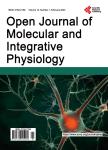Novel genomic biomarkers for acute gentamicin nephrotoxicity in dog
Novel genomic biomarkers for acute gentamicin nephrotoxicity in dog作者机构:CREATe-Genomic Technologies Janssen Pharmaceutical Research & Development LLC San Diego USA Drug Safety Sciences Janssen Pharmaceutical Research & Development LLC San Diego USA Drug Safety Sciences Janssen Pharmaceutical Research & Development LLC Spring House USA Safety Assessment AstraZeneca Pharmaceuticals Watham USA
出 版 物:《Open Journal of Molecular and Integrative Physiology》 (分子和综合生理学期刊(英文))
年 卷 期:2013年第3卷第3期
页 面:125-133页
学科分类:1002[医学-临床医学] 100214[医学-肿瘤学] 10[医学]
主 题:Biomarker Gentamicin Nephrotoxicity Dog
摘 要:Objectives: Novel biomarkers indicative of drug-induced kidney injury (DIKI) in dogs would have significant application in preclinical drug development. We conducted a feasibility study to identify genomic expression profiles for monitoring progressive, acute DIKI in dogs. Materials and Methods: Animals were intramuscularly administered either 0.9% physiological saline or gentamicin (40 mg/kg/day) for 10 consecutive days and euthanized on day 11. Serum and urine samples were collected at various time points and kidney samples were collected at necropsy for biomarker measurements. Results: Acute gentamicin-induced renal histopathology changes were localized to the proximal convoluted tubules and characterized as slight-to-marked, diffuse cortical-medullary tubular epithelial degeneration/necrosis. Serum creatinine (sCr) and blood urea nitrogen (BUN) elevations suggestive of mild renal dysfunction were first observed on days 7 to 8. Gentamicin-induced increased urinary kidney injury molecule-1 (KIM-1) mRNA was observed on day 6 preceding detectable elevations of sCr and/or BUN. Increased urinary KIM-1 mRNA correlated with multifocal KIM-1 immunostaining in the corticomedullary tubular epithelial cells. Microarray analysis revealed changes in additional mRNA expression products detected in urine and/or kidney that should be further investigated for use as potential biomarkers for acute gentamicin related nephrotoxicity in dogs. Conclusion: These findings suggested the utility of non-invasive urinary genomic parameters for monitoring acute DIKI in dogs.



